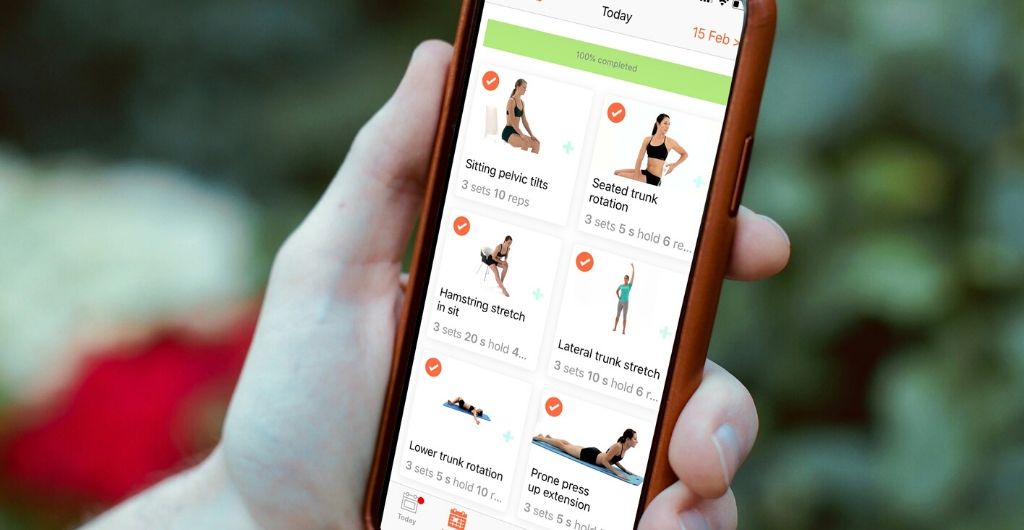
A new study of 27,000 virtual physiotherapy patients has concluded that digital physiotherapy must become a significant part of the treatment mix post Covid-19 – after results showed that it is just as effective as and, in some cases more effective than, in-person treatment.
The Investigating the Effectiveness of Virtual Physiotherapy report by Ascenti – the UK’s biggest private physiotherapy group – captures data on patients’ openness to virtual treatment, pain improvements on a 10-point Numerical Rating Scale (NRS) and satisfaction with outcomes. There is also commentary from clinicians and patients on the benefits and drawbacks of virtual treatment.
Although a relatively new practice (virtual physiotherapy has been provided by Ascenti clinicians for 12 months through its award-winning app*) digital treatment delivered similar outcomes to in-person care at all injury levels. Comparing virtual and in-person treatment, improvements in NRS scores were almost identical for patients with medium and minor level conditions, and outcomes were very positive for both, even in more severe cases (table 1).
The most successful results were achieved when patients accessed integrated care, combining a mixture of digital and in-person treatment, suggesting that this approach – which balances convenience, digital tools and manual therapy if required – could represent the future for the industry.
Key benefits identified around virtual treatment included the convenience of not having to leave the house or book time off work, and the ability of digital tools (videos, diaries, reports) to engage patients in their journey. The study found that patients who accessed video demonstrations again after the session, achieved the best results overall.
Clinicians also felt that some patients were more motivated to learn during video appointments as they knew that manual therapy wasn’t an option, and they described how the insight of seeing into a patient’s home helped with exercise prescriptions, too.
A number of disadvantages were also identified, including missing the power of therapeutic touch for manual assessment and treatment, clinicians being unable to use their hands to correct movement and reduced trust in the process among some patients.
Adam Jarvis, Ascenti’s Chief Operating Officer and a qualified physiotherapist, who was involved in the research, commented: “The results of this study – potentially the world’s largest study of virtual physiotherapy conducted so far – clearly demonstrate that patients who access digital support to help them with MSK injuries can achieve excellent results.
“Digital health services are in high demand right now due to the Covid-19 virus still being in circulation, but even when we eventually move past this, they will still have an important part to play in addressing more familiar barriers to treatment such as lack of time, family commitments and inability to travel.
“There are clearly a number of areas where virtual physiotherapy outperforms in-person appointments. Innovative apps can use a range of digital behaviour change tools to really engage the patient in their recovery journey and the convenience factor could persuade more people to seek out the necessary treatment and stick with it. However, in-person care remains a vital service, being more effective for certain conditions and preferred by some patients.
“Perhaps the central lesson to be learned from this research is that physiotherapy treatment must be built around the needs of the patient. To achieve this, healthcare providers must become adept at offering the right treatment at the right time, to the right patient and through the right clinician in order to achieve the highest levels of engagement and the best outcomes.
“It appears from our study that, for most people, the very best results are achieved through a combination of innovative digital care and elite-quality in-person treatment to support them through the different stages of their recovery journey. Deployed together, this combination can help raise standards in the profession and, the evidence suggests, enhance physiotherapy results overall.”











